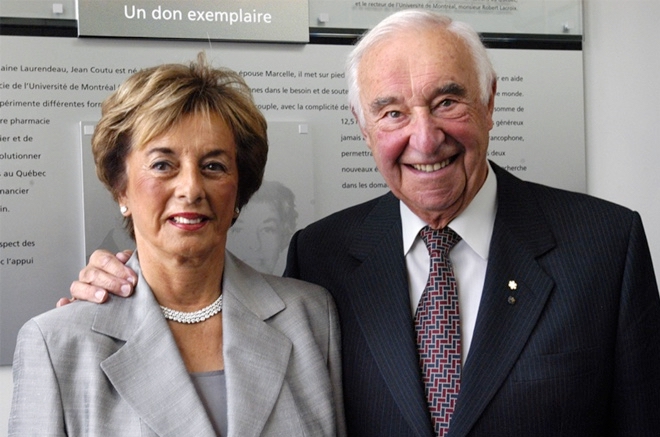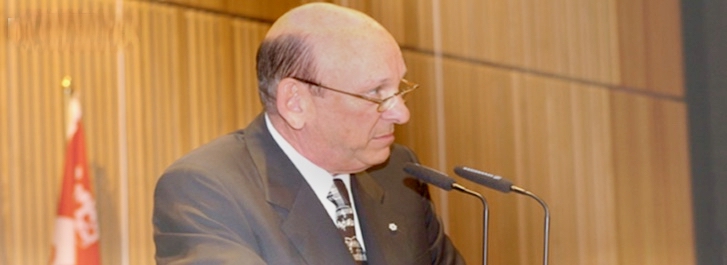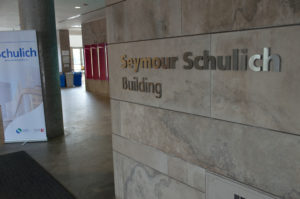(August 19, 2021) The federal budget released in April made the prospect of increasing the disbursement quota very real when it included direction for a disbursement quota consultation, Boosting charitable spending in our communities, which is taking submissions until September 30. Notwithstanding a recently called election, the prospect of charitable foundations being told they must increase their disbursements has now become more than a glint in a changemaker’s eye.
Section 6.3 of the budget, Building Stronger Communities, describes the government’s decision to launch a public disbursement quota consultation “with charities over the coming months on potentially increasing the disbursement quota and updating the tools at the Canada Revenue Agency’s disposal, beginning in 2022. This could potentially increase support for the charitable sector and those that rely on its services by between $1 billion and $2 billion annually.”
Having had to spend so much to mitigate the disaster of the coronavirus pandemic, the government is looking to public and private foundations to up their game.
Charity sector umbrella groups, who have historically lobbied for generous treatment for public and foundations, have issued initial statements and seem unimpressed with the thought of disrupting the status quo, especially when it comes to the wealthiest of Canadian charities.
“Our current position on this file is that there is a lack of sufficient evidence to inform a particular legislative adjustment to the disbursement quota,” said Imagine Canada in a statement. This, even though Imagine Canada spent almost the entirety of 2020 archly predicting the sector would “collapse” without an immediate $10 billion stabilization fund from the federal government.
Philanthropic Foundations Canada (PFC) is a member association of private and public foundations which has historically lobbied the federal government on generous treatment for foundations.
“PFC wants to avoid simplistic and blunt ‘solutions’– with unintended consequences – that divide the sector when we need consistent and aligned key messages with the Federal Government to make progress,” a spokesperson for the organization told The Charity Report.
It has issued a policy briefing on why the DQ should remained unchanged.
In a backgrounder to the recently announced disbursement quota consultation, the department of finance says the disbursement quota, introduced in 1976, included the regulation that private foundations must have a minimum expenditure requirement of 5% based upon the value of any property not used in charitable programs or administration. The amount was subsequently lowered to 4.5% and extended to public foundations in the 1980s.
In 2004, as part of a broader reform of the Income Tax Act rules regarding charities, the disbursement quota was reduced from 4.5% to its current level of 3.5%, a 3.5% return being considered “typical” for an investment portfolio held by a registered charity.
Return on investment for both public and private foundations, however, has typically been much higher than 3.5%. The Hospital for Sick Children’s Foundation, for example, posted a 9.6% average annualized rate of return since 1995.
The Canadian Charitable Tax Credit

But, perhaps, in addition to reviewing the tiny amount a charitable foundation is legally bound to grant, it is also time to review the nature of the charity tax credit system itself, the most generous tax incentive in the world for charitable giving, which many involved in the sector consider as ‘costing them nothing.’ And while it’s true a tax credit costs a charity nothing, it costs Canadian taxpayers a lot. Up to 70% of the value of a charitable tax credit is money that does not come into the federal treasury, therefore unavailable to spend on health, social services, education, and other government programs. It is, instead, diverted to a private charity to do with whatever allowable activity it thinks best, which Canada’s largest foundations appear to believe is bulking up their investment portfolios. (The percentage of the charitable tax credit depends on the form of the gift, whether it is appreciable market shares, cash, or something else.)
In 2006, the Fondation Marcelle et Jean Coutu, one of Canada’s largest charitable foundations, had $233.2 million in gross assets. Jean Coutu is the founder of a Canadian drugstore chain headquartered in Varennes, Quebec. By 2020, their tax forms reflected those assets had grown to $622.0 million. In 2020, it made $26.0 million in grants to qualified donees or 4.19% of its asset value. From 2006 to 2020, Fondation Marcelle et Jean Coutu made a total of $204.2 million in grants to qualified donees. But, during the same period, it issued $274.9 million in charitable tax credits for gifts received, taking more from the Canadian treasury than it put back into Canadian society.
That means the Canadian taxpayer, theoretically, could have gotten a better deal over time if the Fondation Marcelle et Jean Coutu did not exist. Because of the way in which the tax credit and disbursement quota is structured, the largest private foundations can take more money from Canadians than they give. And some do.
The Schulich Foundation

Seymour Schulich’s first job was for Shell Oil in 1976, but he made his money in the mining industry, mostly goldmining, where he helped pioneer the concept of royalty payments in the industry. Schulich was Director of Newmont Mining Corporation, the world’s largest goldminer, and Chairman of its merchant banking division from 2002-2007. Many of the world’s biggest mining companies are Canadian. And many, including Newmont, have been embroiled in human rights or environmental degradation lawsuits for decades.
In Canada, Seymour Schulich is described as a businessman/philanthropist. The Schulich Foundation was established in 2003 and is now among the top 20 Canadian foundations in terms of asset value. And the Schulich name has become synonymous with elite post-secondary education, not goldmining. There’s the Schulich School of Business at York University, the Schulich School of Medicine & Dentistry at Western University, the Schulich School of Engineering at University of Calgary, the Schulich School of Law at Dalhousie University, and the Schulich School of Music at McGill University, among others.

In 2020, The Schulich Foundation held $387.9 million in gross assets, with $5,650 in liabilities. Between 2003 and 2020, it issued $566 million in tax creditable receipts for gifts the foundation had received, a large part of which is now part of its investment portfolio. During the same period, it made a total of $172.1 million in grants to qualified donees. Over 18 years, the operation took hundreds of millions of dollars more from the nation’s pocketbook by issuing charitable tax credits than it put back into Canadian society by making grants, building up its own coffers instead of using the charitable tax credit to help the neediest in our country. Simultaneously, Schulich’s strategically directed grant making has resulted in the family name being emblazoned on the sides significant public institutions and Seymour Schulich himself successfully re-branded from a mining executive associated with human rights abuses and environmental degradation into a businessman/philanthropist to whom we should feel grateful.
According to the most recent information filed with CRA, The Schulich Foundation has three directors—Seymour Schulich, his wife Tanna Schulich and their daughter Judith Schulich. The foundation has no website, no public interface, no listed phone number. And in addition to its high-profile university giving, tax records show it gave $500,000 to the Fraser Institute in 2018, 2019 and 2020, doubling its 2017 contribution of $250,000 in that year.
The Fraser Institute, a registered charity, is described as a conservative and libertarian think tank believing smaller government is better, and that the public health care system and public school system should be dismantled in favour of private options. Climate change skeptics, they are part of the Economic Freedom Network. And, as documented in Jane Mayer’s book, Dark Money, the Fraser Institute has received hundreds of thousands of dollars from foundations controlled by Charles and David Koch. “[The Koch brothers] have used wealth and power to wage a covert campaign to shift American thinking and policies towards their own far-right libertarian views,” Mayer says.
Clearly, The Schulich Foundation does believe in government enough to make money from its generous tax credits for charitable gifts.
How long can Canada afford to keep doing this?
The Disbursement Quota
The Fondation Marcelle et Jean Coutu and The Schulich Foundation are two examples of how the largest charitable foundations in Canada operate. In 2018, public and private foundations were collectively holding $92 billion in assets, a figure that’s likely well over $100 billion today. In 2018, they collectively issued $7 billion in grants. Foundations often use this $7 billion grant figure to say, “see, we already are giving more than 3.5%.”
But as Nobel Prize Laureate Angus Deaton points out in his research on inequity, studying averages is a poor way to study equity. And in looking at the charity foundation spending, averages don’t tell the story. Especially since many of the mid-range foundations in Canada use their structure more as an annual fund, putting in the approximate amount of money they intend to spend that year, and so whose DQ could be 90%. But the people who own these mid-range foundations are not the people operating their foundations as mammoth re-branding legacy projects.
An increase in the DQ would not affect most charitable foundations, but it would affect the largest. A raised disbursement quota is most applicable to Canada’s 20 or 30 largest charitable foundations, who dwarf the other approximately 6,000 foundations in terms of gross asset value.
Public awareness of how wealthy foundations spend their money
As the consultations take their course, it will be interesting to observe how willing the government is to maintain the status quo in the way it pays for charitable tax credits and what, exactly, it is getting in return for its investment.
It could depend upon how aware the Canadian public is about the ways in which the largest private and public foundations spend their money.
The country was transfixed by The WE Charity scandal for the better part of 2020, a titillating tattle full of gossip about the prime minister, his wife and mother, and two handsome young entrepreneurs who seemed to fly too close to the sun.
Yet, Canadians might find some leftover outrage for a profoundly larger perfectly legal process wherein the Canadian taxpayer subsidizes the transfer of wealth from the federal treasury into the pockets of the ultra-wealthy who then use it to promote their brand and have their name adorn formidable Canadian public institutions such as hospitals and universities—all in the name of charity.
A poll conducted by Ipsos and Giv3, the organization behind Giving Tuesday in Canada, found that, once the DQ was explained to them, 87% of Canadians found it unacceptable that charitable foundations can hold tens of billions of dollars in assets, and give only a tiny percentage away each year.
It is hard to say which is the most distasteful. That Canadians—most of whom are working harder for their money every year—are subsidizing the accumulation of wealth by ‘big philanthropists.’ Or that the beneficiaries of charitable foundation grants are supposed to jump through hoops to get a grant, then bow down in gratitude to thank them for their generosity, generosity hugely subsidized by Canadian taxpayers.
Voices for Change

The voices for change are growing louder.
“It’s an issue that should have been fixed a long time ago,” Bill Young told The Charity Report in February.
“When you break it down, Canadian taxpayers give up at least 50 cents on the dollar for every dollar that goes into a foundation. What we get back for that is the 3.5% spent annually by a foundation, plus the foundation pays no tax on the earnings it makes off its investments, investments which don’t have to be used for any beneficial social impact, whatsoever. That doesn’t sound like a good deal for taxpayers to me.”
Young earned his wealth from his years in the private sector, primarily as CEO of Hamilton Computers and Optel Communications Corp (later Axxent). For the past 20 years, as the founder of Social Capital Partners (SCP), he has been focused on social impact investing.
“What other business defines itself by 3.5% of its operations, as opposed to the 96.5% of the business it does,” he says. “Why would anyone have objections to increasing this? If a foundation’s purpose is to do good, then it will help do good.”

John Hallward is at the helm of an Increasing the Grants campaign to raise the DQ, as well as Chairman and founder of GIV3.
“When we brought Giving Tuesday to Canada, I thought it was a really great way to generate money for good causes, and 2020 saw the largest amount of money raised in one day ever,” he told The Charity Report.
“But when I looked at how much money was tied up in foundation assets, doing absolutely nothing for anyone except the investment managers, I thought GivingTuesday was pennies in comparison, and changed my focus as a result. Foundation earnings have been more than 10%—way more than 10% in some instances for years—and they are only required to spend 3.5% of that.
“They are amassing huge amounts of wealth, and they are hoarding that wealth when it could be used to deal with the very serious issues our country is dealing with right now. It’s just not right.”
To have your voice heard in the disbursement quota consultation click here to find out how: Boosting charitable spending in our communities.
Related reading
Calls to increase the disbursement quota growing louder: ‘Foundations are hoarding wealth’ February 17, 2021
New research by The Charity Report reveals where private foundations spend their money December 14, 2020
Growth of Donor Advised Funds: Charitable Boon or Parking Lot? August 28, 2020
DQ increase: “A 10%, 5-year increase adds billions to the charity economy” June 9, 2020
Ray Madoff: ‘Is philanthropy adequately serving the public good?’ May 29, 2020